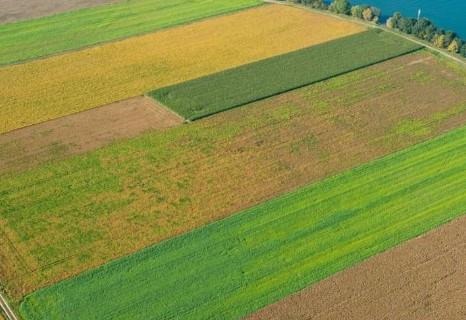
Aerial view of crops around Chalon-sur-Saône (Region of Bourgogne, France) .
With the increasing food demands of a growing world population, it is essential to increase agricultural production while reducing its environmental footprint. Crop diversification techniques have often been proposed as agroecological solutions to achieve this goal. Among them, intercropping—the growth of several crop species in the same fields—seems to be particularly promising. This practice has always been uncommon in Europe and, although it has traditionally been used in countries of the Global South, it is currently declining due to urbanization and migration of rural populations.
Global conclusions drawn from global data
To objectively assess the performance of intercropping systems under modern conditions, a team of French, Dutch, and Chinese researchers performed a detailed analysis of a vast database, which brought together information from 226 agricultural experiments conducted worldwide. Based on a meta-analysis, the scientists were able to compare the productivity of monocultures and different intercropping configurations. Their findings were published on 3 January in PNAS.
After analyzing grain yield data, the researchers used data on grain calories and protein concentrations to assess the relevance of intercropping for food and feed production. They were then able to quantify the differences between intercropping and monocropping, and identify crop combinations and management practices that result in higher grain, calorie and protein yields with intercropping than with monocropping.
Combining several crop species leads to equal or higher productivity on 19% less land
This research showed that intercropping resulted in mean protein levels that were similar to and often higher than those obtained with monocultures.
Click here to see more...